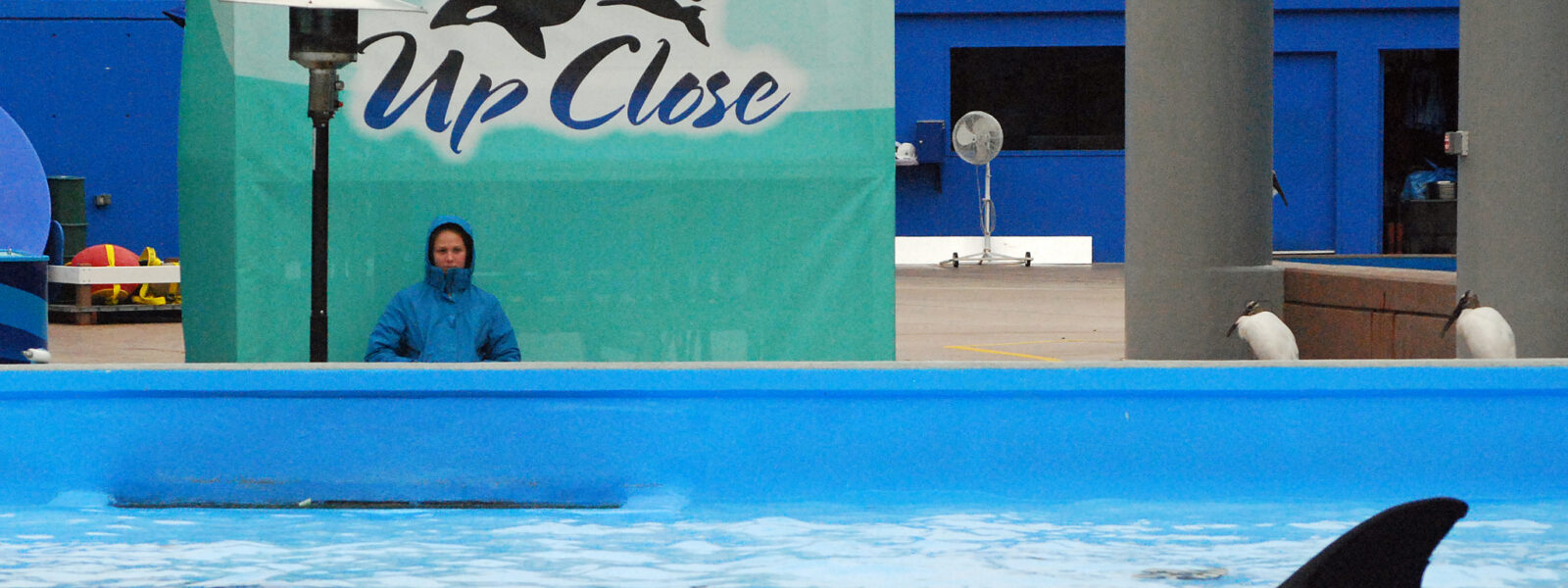

SeaWorld has announced an end to the forced breeding of their captive orcas. The International Marine Mammal Project (IMMP)'s several lawsuits and research were clearly part of their motivation to end breeding, taking advantage of the “Blackfish Effect” from the documentary that opened the facts of captivity to the world. Many other organizations and individuals worked tirelessly for years to end the cruel keeping of intelligent, social, and wide-ranging orcas in small concrete tanks. If it “takes a village” to raise a child, it takes a lot more of the community nationwide to succeed in showing SeaWorld’s leaders the errors of their way.
IMMP has just uncovered the extent of manipulation of female orcas for the artificial breeding program that SeaWorld is finally ending.
A few years back, SeaWorld commissioned a study using invasive research on female captive orcas to determine how to manipulate their reproductive cycles. The objective was to boost the number of babies by reducing the time between pregnancies through artificial insemination and drugs. Ultimately, such intervention produced more orca babies born to perform in SeaWorld’s three parks. This practice benefited the bottom line at the expense of these highly intelligent and sentient apex predators.
SeaWorld, in response to last fall’s amendment to a permit by the California Coastal Commission that would ban breeding of captive orcas in their San Diego park, claimed at that time that orcas have a “right to breed.”
But SeaWorld was abusing such rights themselves by making baby factories out of their orcas and dolphins using the drug altrenogest, a synthetic progesterone analog, according to the research, which is used routinely in domestic horses and pigs to boost production of young.
The evidence for this invasive research on female orcas is contained in a scientific paper touted by SeaWorld as an example of its contribution to the science of orcas. The article is "Reproductive Physiology and Development of Artificial Insemination Technology in Killer Whales (Orcinus orca)" from the scientific journal Biology of Reproduction, August 1, 2004 vol. 71 no. 2 650-660.
SeaWorld lists this particular paper here on its website, ironically called “SeaWorld Cares”.
The scientific paper states: “This project was funded by SeaWorld Corporation and is a SeaWorld Technical contribution no. 2004-01-T.” The lead author is listed as based at SeaWorld San Antonio in Texas.
Three of SeaWorld’s female orcas were used in this research study, which the authors termed: “…the first successful conceptions, resulting in live offspring, using artificial insemination in any cetacean species.”
Not just female orcas are subjected to this invasive forced breeding. Such use of artificial hormones to help induce pregnancy, according to the paper, has also been done with Pacific white-sided and bottlenose dolphins at SeaWorld.
Former SeaWorld orca trainer John Hargrove, who appeared in “Blackfish”, objected to the breeding of orca females at SeaWorld at an age younger than natural breeding occurring in wild orcas. Many such artificial breeding efforts in captivity result in still-born babies or weak orcas that die within a few months of birth.
We now know that SeaWorld gives medication to orcas repeatedly to reduce stress and to control stress-related diseases. Drugs routinely administered include antibiotics, antacids, and sometimes antidepressants and anti-psychotics.
The reasons such drugs are needed is that orcas do not do well in captivity. IMMP and other organizations and scientists have urged SeaWorld to retire their orcas to sea pens in the ocean, where more natural and larger environmental conditions can prevail while the orcas are still under care of humans.
While SeaWorld claims they will no longer conduct invasive artificial insemination, the question still remains: Why did they follow this destructive, immoral path in the first place? And what about the use of such practices on dolphins, belugas, and pilot whales under SeaWorld’s care?
Photo credit Mark J. Palmer / International Marine Mammal Project.